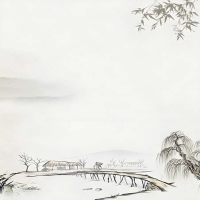在中医理论中,脉是气血运行的通道,通过切脉可以诊断疾病,预测健康。古人将脉象分为浮、沉、迟、数等多种类型,每一种都对应着不同的生理状态。"浮脉如羽毛,轻触即得",这不仅是医学描述,更富有诗意,让人联想到轻盈与飘渺。诗人杜甫在《秋兴八首》中写道:"脉脉此情谁诉",借脉的连绵不绝,隐喻情感的深长与无奈。这里,脉超越了生理范畴,成为情感与命运的象征。
进一步地,脉的诗句 often appear in classical poetry to convey subtle emotions and philosophical insights. For instance, in Li Bai's works, the pulse of nature is often compared to the human pulse, creating a sense of unity between man and the universe. This reflects the Taoist idea of harmony and balance, which is central to both traditional medicine and literary expression. The phrase "脉动山河" (the pulse moves mountains and rivers) illustrates how poets used脉 to depict the dynamic flow of life and the cosmos.

Moreover, the integration of脉 in education and cultural practices has preserved this wisdom through generations. In modern times, as people seek holistic health approaches,脉的诗句 gain renewed relevance, offering insights into mindfulness and well-being. By exploring these verses, one can appreciate the depth of Chinese thought and its applicability to contemporary life.

In conclusion,脉的诗句 are not merely artistic expressions but bridges connecting past and present, science and art. They remind us of the enduring power of cultural heritage to inspire and heal.

脉的诗句,自古便是中华文化中一道独特的风景线。在中医典籍与古典诗词的交汇处,脉不仅代表着生命的韵律,更承载着文人墨客的深邃情感与哲学思考。从《黄帝内经》到李时珍的《濒湖脉学》,中医对脉象的描绘如诗如画,而诗人则借脉之意象,抒发对人生、自然与时空的感悟。这种跨领域的融合,展现了中华文明中科学与人文的和谐统一。



 相关阅读
相关阅读











